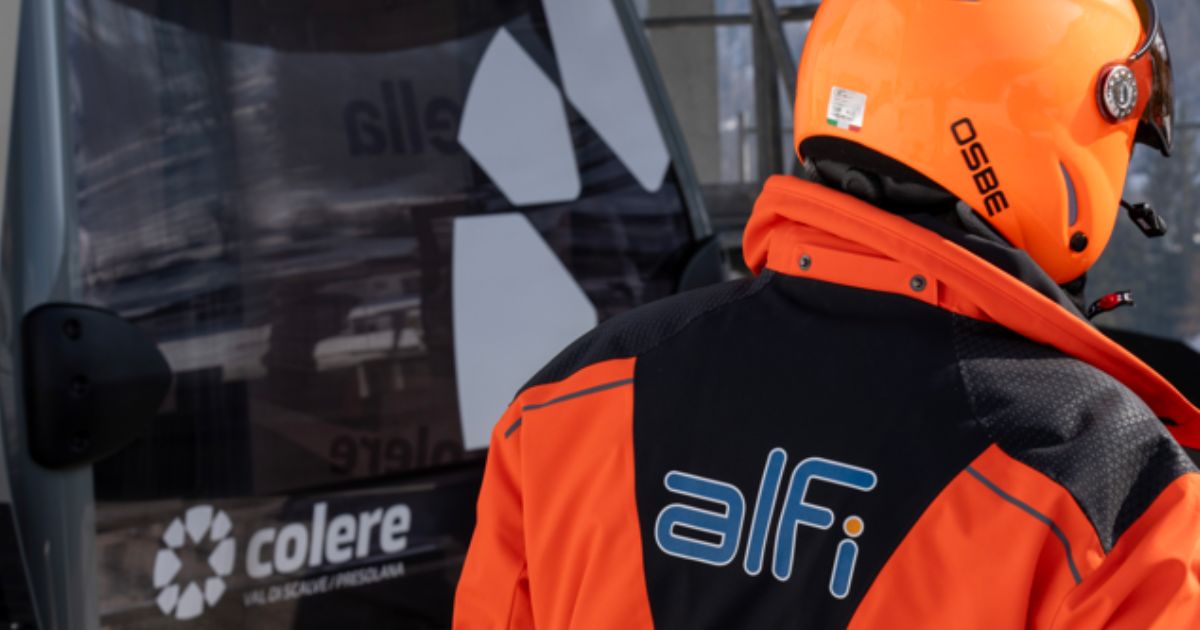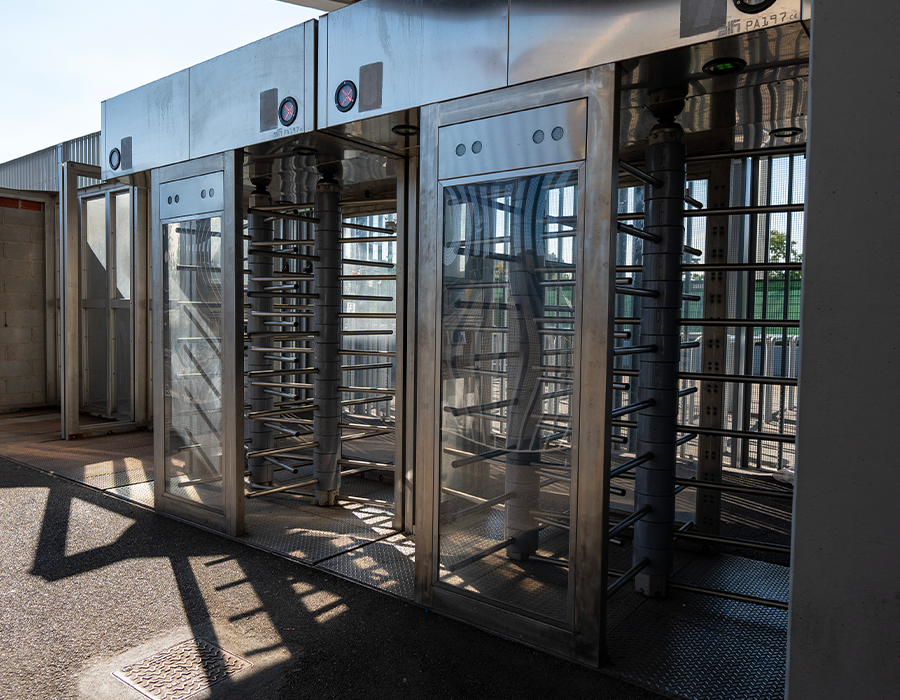
The Evolution of People Access: ALFI and the Revolution of Controls, from Ski Passes to Football
ALFI is defining the next frontier of access control. In an exclusive dialogue, Paolo Serra reveals how the integration of NFC (Near Field Communication), security, and the complete dematerialization of entry tickets is eliminating waiting times. This is a crucial step to elevate safety standards and profoundly transform the Fan Experience within sports facilities.
SFS continues its exploration of entrepreneurial realities that are redefining the horizon of modern sport, and this time the spotlight is on ALFI. This company is a virtuous example of how tradition can coexist with technological avant-garde. Its foundation dates back to 1962 on the picturesque shores of Lake Maggiore in Piedmont, alongside a crucial operating headquarters near Milan. This dual geographical location is emblematic of its strategy: honoring its origins while maintaining a constant focus on innovation.
ALFI holds the record as an absolute pioneer in the access management systems sector, a history that culminated with the invention of the ski pass in 1974 (a patent which, after a period of cession to the Olivetti Group, has fully returned to corporate control). Today, the central goal is innovation in People Access. From stadium turnstiles to the management of ticketing and control systems in ski resorts, ALFI operates as a technological partner, providing security, efficiency, and a significant amount of useful data for management. But how is the experience ALFI has gained in flow control shaping operational effectiveness and fan perception of events in the football sector? To answer this question, we spoke directly with Paolo Serra, the company’s Account Manager for Sport & Entertainment.
What are the latest innovations you have introduced in access systems (turnstiles, gates) for stadiums? How is the use of technologies like facial recognition, dynamic QR codes, or NFC changing the management of spectator flows?
“Mobile technology is definitely a game changer in the use of access control services in stadiums. This is a sector where, we must always remember, two aspects must coexist: the recreational one and the one that guarantees maximum security. Only in airports, in fact, are there widespread security checks not too dissimilar from those carried out in stadiums. The QR code, dynamic or static, will first be flanked and perhaps later supplanted by NFC technology, which until recently was reserved only for the Android world but is now available to system integrators in the Apple world as well. The possibilities offered by the Big Tech Wallets open up previously unthinkable horizons. Facial recognition systems are certainly helpful for law enforcement, and the latest commercial proposals submitted to teams balance security needs with the right to privacy regulated by the GDPR”.
Does your management software (like Match or Argo) go beyond simply counting entries? How is the data collected on fan flow and purchasing behavior (e.g., internal consumption) used to improve operational efficiency and the Fan Experience?
“Access control systems for large masses of people (people access) have two purposes. The more obvious one is to check who enters a location; we verify who is or is not entitled to enter a stadium or a hall. But there is a second purpose that is increasingly decisive for our clients: access control systems produce data, large quantities of data that, once analyzed, serve to improve the fans’ experience and refine event organization. We help our clients analyze this data and utilize it optimally”.
What is your vision for the stadium of the future? Do you see integrations between your systems and advanced digital experiences, such as the Metaverse or interactive Fan Zones, to create a ‘phygital’ experience for the fan?
“It is difficult to say how virtual reality technology might enter the stands. These technologies are not yet completely mature, even if they have enormous potential, not only for matches but certainly, and perhaps to a greater extent, for concerts held inside the stadiums. These solutions could integrate with or replace the maxi-screens and bring fans closer to their idols. The complete dematerialization of tickets will help move in this direction. Already today, with a wallet ticket, you can obtain interactive stadium maps and speed up entry operations. The smartphone or its future substitutes will be the lever to open up new interactive and immersive experiences”.
How do you balance the need for maximum security with the necessity of ensuring quick and stress-free access for fans? And what solutions do you offer to reduce queues?
“Queues do not depend exclusively on the turnstiles but on everything that happens before them, such as organizing lines, pre-filtering, etc. We can speed up the passage at the turnstile, but we can do little for everything else because security needs prevail. However, if I arrive at the stadium and the ticket appears on my phone via geolocation without having to search for it, I have one less operation to do. If, in the presence of the reader, I don’t have to struggle with reading the QR but just need to place my phone near the reader, my queue will become much more fluid. We are focusing on this: simplifying and automating all operations related to stadium entry.”

In addition to access, are your systems designed to interact with internal stadium services? For example, is it possible to use the same credential (ticket/app) for cashless payments or to access reserved areas, thus improving the overall fan experience?
“Every control operation at the stadium interacts with our systems. Speaking of payments, cashless transactions happen on platforms different from the access control systems. Apple Wallet, Google Wallet, Samsung Wallet, and similar are linked to banking systems. However, we use the same NFC technology, allowing fans to use a gesture they are familiar with, creating a modern and reliable user experience”.
Security in stadiums is fundamental. How do your systems ensure maximum safety, especially in managing entries and in emergency situations (such as a blackout or an evacuation)? What certifications or standards do you follow?
“Our PA197 turnstile is the only one to have two characteristics that meet safety requirements in emergency cases: they are equipped with on-board batteries capable of managing entries for hours in the total absence of power or a blackout. Furthermore, they are provided with independent combs, meaning the rotor is not fixed but robotic. Therefore, in the event of an evacuation, the arms of our full-height turnstiles (mandatory in Italy) can be put in a fully open position, allowing for emergency evacuation”.
Sustainability also concerns operational efficiency. Do your products contribute to reducing environmental impact or optimizing the use of resources within the facilities?
“In our sector, there are few of us, and we differentiate ourselves through a high degree of customer personalization and total integration with third parties. Our commitment to sustainability is profound and translates into the dematerialization of physical media. In the ski sector, for example, we were pioneers: since 2018, our customers have been able to eliminate the physical ski pass and simply ski with their phone in their pocket via Bluetooth. Consider that in the world of skiing in Europe alone, approximately 50 million physical cards are produced and disposed of (often incorrectly). Through this transition, we aim to reach 80% dematerialized tickets for ski resorts in the next five years”.
For stadiums, the path is even more immediate. Although QR codes and various apps already exist today, starting next year, thanks to technologies like NFC and wallets, we will achieve complete dematerialization. We want the fan experience to be entirely digital, completely eliminating the need for physical media. This not only has a positive environmental impact but also eliminates latency times and, consequently, queues at the turnstiles. For the Serie A, B, and C teams we work with, minimizing waiting times is an imperative, and total dematerialization is the key to achieving it”.



